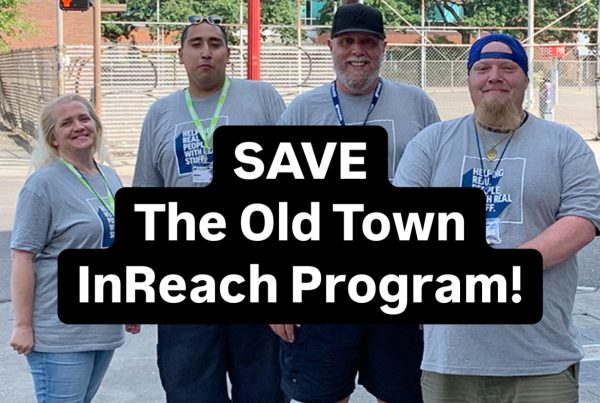Most nonprofit funding works well for organizations, but the labor of reporting outcomes can cause an elephant of a problem. The following parable of a nonprofit in need of an elephant is all too real for many nonprofits.
This is a story about a Nonprofit that needed an elephant—an African Elephant to be precise. Why exactly the Nonprofit needed an African Elephant is not relevant to this story. Suffice it to say that an African Elephant was definitely a MISSION APPROPRIATE need and would greatly benefit the Nonprofit’s services and the people who rely on them.
Unfortunately, acquiring an African Elephant was far beyond the financial CAPACITY of the Nonprofit. Despite how much benefit the elephant would provide, on its own the Nonprofit simply did not have the funding. So, as nonprofits often do, the Nonprofit sought a donor who could help them procure the elephant.
Searching for and applying for funding does not make for an exciting story. Let’s skip ahead to the WONDROUS NEWS that the Nonprofit’s request for support was approved by a Benefactor who would pay for the Nonprofit’s lease of an African Elephant. While leasing an elephant was not ideal, as nonprofits often do, the Nonprofit compromised and eagerly accepted this generosity. After all, it was better than no African Elephant at all.
Not all the news was good. While the Benefactor was willing to fund the lease payments, the Benefactor did not want to fund any other expenses associated with the elephant. Unfortunately, these expenses were QUITE A LOT. African Elephants eat a great deal, of course. There also would be purchases of straw and hay in great quantity, not to mention shovels and other tools necessary for the expansive cleanup required of African Elephants. Employees at the Nonprofit often joked among themselves that the elephant had considerable “up front” and “backend” costs.
There were other expenses, too, of course. BORING BUT NECESSARY things like facility improvements, insurance (lest someone gets injured), utilities (lots of water use!), vet bills, and, of course, staff time.
 Reporting and Outcomes in Nonprofit Funding
Reporting and Outcomes in Nonprofit Funding
One additional expense involved REPORTING required by the Benefactor—monthly updates that documented budget-to-actual spending, how the African Elephant was being used, demographic data of those served by the elephant, and stories of success and challenge. While the Nonprofit agreed that this data would be helpful in evaluating the African Elephant’s OUTCOMES, the Nonprofit would need to fund an additional staff person to collect, collate, analyze, and disseminate the stories and data each month. This expense was not included in the Benefactor’s grant.
After some considerable negotiation with the Benefactor, the Nonprofit was able to get these costs partially covered by the Benefactor. This was very good news, for now, the Nonprofit would be able to benefit from the African Elephant without having to absorb all the OVERHEAD COSTS to the detriment of other programs and services!
Well, needless to say, the African Elephant was a GREAT SUCCESS! Not only did the elephant enhance the Nonprofit’s services and impact in ways that met its objectives, but the elephant brought about benefits the Nonprofit had not even anticipated. It was not too long before the Nonprofit, its staff and volunteers, and the people it served concluded that not having an African Elephant was unimaginable.
An Unexpected Change of Terms
Oh, how I wish this was the end of the story! Unfortunately, it is not. For one day, the Nonprofit received some UNEXPECTED and very ALARMING news. The Benefactor decided that it would be necessary to alter the arrangement. The Benefactor informed the Nonprofit that it would have to lease an Indian Elephant instead of an African Elephant.
This would not do, concluded the Nonprofit. The Nonprofit realized that an Indian Elephant would be so much more difficult to manage that it might be better to go without an elephant at all. The Nonprofit was in a bind. As much as not having an elephant would pain the Nonprofit, as nonprofits often do, the Nonprofit made the difficult yet prudent decision that having an Indian Elephant posed too many risks and was not SUSTAINABLE. The Nonprofit regrettably informed the Benefactor of its decision.
Is this the end of the story? Fortunately, no. For seemingly inexplicable but very welcome reasons, the Benefactor decided that the African Elephant could remain. This was very good news indeed! But as anyone who works at a nonprofit knows, there are rarely SUNNY days that do not have at least some CLOUDS. In this case, the Nonprofit learned that while the African Elephant would stay, the Benefactor would no longer fund costs associated with its care and upkeep.
What was the Nonprofit to do? Well, what could it do? The African Elephant had become so important to the Nonprofit, the Nonprofit could not bear to part with it. So, the Nonprofit reckoned it would figure out how to BEAR THE COSTS of the African Elephant.
Because that’s what nonprofits do.
Scott Kerman is the Executive Director of Blanchet House and Blanchet Farm in Oregon. You can read more of his writing here.


















